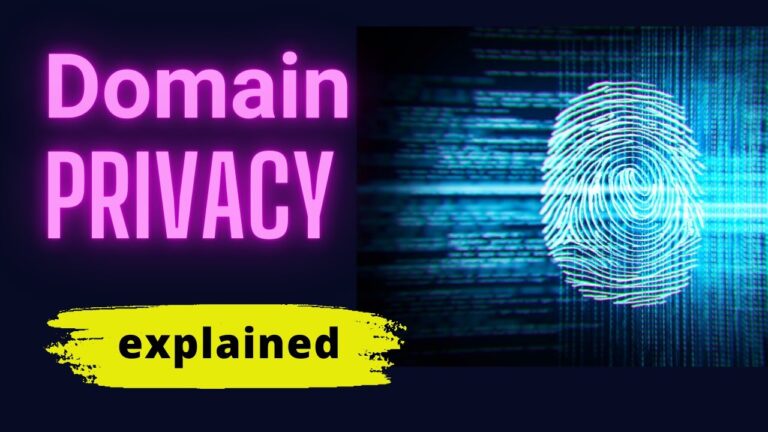In today’s digital world, keeping your online identity safe is more important than ever. Domain names are key to a business’s brand and visibility. They can lead to conflicts like trademark infringement and cybersquatting. Knowing how to handle these issues can protect your online presence.
The Uniform Domain Name Dispute Resolution Policy (UDRP) helps with these problems. It was set up by the Internet Corporation for Assigned Names and Numbers (ICANN). This policy makes it easier to deal with domain name disputes. It helps you defend your brand and avoid costly legal fights.
Key Takeaways
- The UDRP provides a low-cost and efficient method for resolving domain name disputes.
- Trademark infringement is a common catalyst for domain conflicts.
- Taking proactive measures can help you safeguard your online identity.
- ICANN facilitates dispute resolutions but does not provide individual customer service.
- Consult a specialized attorney if facing legal issues related to trademark infringement.
- Understanding your legal options is essential for effective domain name dispute resolution.
Understanding Domain Name Disputes

In today’s digital world, domain name disputes are a big problem for businesses and people. The domain name industry is now worth billions of dollars. Conflicts over who owns and uses domain names can hurt brands and lose customer trust. It’s key to know the types of disputes and what causes them.
Common Types of Domain Name Conflicts
There are several common domain name conflicts. Each one has its own issues:
- Cybersquatting: This happens when someone registers a domain name that’s the same or very similar to a trademark. They usually do this to make money off the brand’s good name.
- Typosquatting: People create domain names that are almost the same as popular brands but with small mistakes. They hope to catch people who type the wrong name and then send them to their site.
- Reverse domain name hijacking: This is when someone with a trademark tries to take a domain name from someone else. They claim it’s theirs, even if it’s not.
- Generic top-level domain disputes: These happen when a trademark might be broken because of new generic top-level domains.
How Trademark Infringement Leads to Disputes
Trademark infringement is a big part of domain name disputes. When a domain name is used in bad faith, it can confuse people and hurt a brand’s reputation. To win a domain name dispute, you need to show the domain name is very similar to your trademark. You also need to prove the person who registered it doesn’t have a good reason to use it.
This means you need to gather evidence and understand the laws that apply. It’s important to act early to protect your rights.
Legal Options for Domain Name Conflict Resolution

When dealing with domain name disputes, knowing your legal options is key. The Uniform Domain Name Dispute Resolution Policy (UDRP) is a major tool. It’s set up by ICANN to help solve disputes over domain names that might infringe on trademarks.
Overview of the Uniform Domain Name Dispute Resolution Policy (UDRP)
The UDRP is a main way to handle domain name disputes. To start a UDRP case, you need to prove you own a trademark. You must also show the domain owner doesn’t have the right to it and that they registered it in bad faith. This rule helps protect trademark owners and keeps domain registration fair.
Benefits of Using UDRP over Litigation
Choosing UDRP over court cases has big advantages. The main benefits are:
- Faster Resolutions: Cases with WIPO are usually solved in two months.
- Cost-Effectiveness: UDRP complaints cost less than court cases.
- Specialized Expertise: UDRP panels have experts for fair decisions.
- Access to Multiple Domain Extensions: UDRP works with 252 country code top-level domains.
Recently, domain name values have gone up, and so have cybersquatting cases. More people are turning to UDRP to protect their trademarks and keep their online presence safe.
| Aspect | UDRP | Litigation |
|---|---|---|
| Resolution Time | Typically within 2 months | Can take years |
| Cost | Generally lower | Higher legal fees |
| Expertise | Specialized domain experts | General court judges |
| Accessibility | Available for various ccTLDs | Can be limited by jurisdiction |
The Domain Name Dispute Process
Knowing how domain name disputes work is key. It starts with a complaint under the Uniform Domain-Name Dispute-Resolution Policy (UDRP). This method helps solve disputes fairly for everyone.
Initiating a UDRP Complaint
To start a UDRP complaint, you must file with a service like the World Intellectual Property Organization (WIPO) or the National Arbitration Forum (NAF). Your complaint must follow UDRP rules. This includes:
- Confusing similarity between the domain name and your trademark.
- The respondent has no real interest in the domain name.
- Bad faith in registering and using the domain.
Showing your case well is important. You need strong evidence and clear arguments. The UDRP makes it easier to quickly solve cases of cybersquatting.
Steps for Responding to a UDRP Complaint
When facing a UDRP complaint, there are important steps to take. As a registrant, you must defend yourself well. Here’s how:
- Read the complaint to understand the claims against you.
- Collect evidence to show you have a right to the domain name.
- Write a detailed response to each point in the complaint.
- Send your response on time, as the service provider requires.
By focusing on your defense, you can protect your interests. This approach helps you avoid losses in domain name disputes.
The Role of Domain Name Arbitration
Domain name arbitration is a quick way to solve disputes over domain names. It’s faster and cheaper than going to court. The rules of arbitration make sure it’s fair and impartial.
Understanding Domain Name Arbitration Procedures
Arbitration for domain name disputes has several steps. First, you file a complaint explaining the issue and what you want. Then, an expert in domain name law is chosen to oversee the case.
The arbitrator makes a decision quickly, much faster than court. This fast process helps both sides find a solution sooner. The decision is final, as long as the arbitration was fair.
Choosing the Right Arbitration Service Provider
Choosing the right arbitration provider is key. Look for a few important things:
- Experience: Choose a provider with a good track record in domain name disputes.
- Approval by ICANN: Make sure the provider is approved by ICANN for credibility.
- Familiarity with Domain Name Law: The provider should know a lot about domain name law.
- Previous Case Handling: Check how well the provider has handled cases in the past.
By thinking about these points, you can increase your chances of a good outcome. This choice is important for solving your current problem and for future domain name issues.
Exploring Domain Name Litigation
Domain name litigation is a strong legal tool for solving domain disputes. While UDRP is often chosen, sometimes litigation is needed. This part talks about when to choose litigation, and what costs and time it might take.
When to Consider Domain Name Litigation
Deciding when to go to court is key. Cases with complex laws, big money at stake, or trademark issues usually need court. If a domain might confuse people or harm your trademark, court might be your best choice. It helps protect your rights against others using similar domains without permission.
The Cost and Duration of Domain Name Litigation
Litigation can be very expensive compared to other ways to solve disputes. It includes legal fees, court costs, and possible damages. Costs can range from thousands to tens of thousands of dollars, based on the case’s complexity. Cases can last from months to years.
If you’re thinking about going to court, remember the time and money it takes. This might stop some from choosing this path.
| Aspect | Average Cost | Estimated Duration |
|---|---|---|
| Initial Filing Fees | $200 – $400 | 1 – 2 weeks |
| Attorney Fees | $200 – $600 per hour | Ongoing |
| Overall Expenses | $10,000 – $100,000+ | 6 months – 2 years |
Conclusion
Understanding your legal options for domain name conflicts is key today. Knowing the Uniform Domain Name Dispute Resolution Policy (UDRP) helps protect your domain name. The UDRP makes disputes fast, usually in 60 days, saving time and money compared to long court battles.
Being proactive is vital when dealing with domain name rights. You might use the UDRP, arbitration, or go to court. Make sure your choices match your goals. Winning a complaint often depends on proving bad faith, and you must act quickly to avoid long disputes.
Knowing how to handle domain name conflicts gives you power. Stay updated and ready, as defending your domain name is essential in the digital world.
FAQ
What are common reasons for domain name disputes?
Domain name disputes often happen because of trademark infringement, cybersquatting, and typosquatting. Cybersquatting is when someone registers a domain name that’s the same or similar to an existing trademark to make money from it. Typosquatting uses common misspellings of well-known domain names.
What is the UDRP, and why is it important for resolving domain disputes?
The Uniform Domain Name Dispute Resolution Policy (UDRP) is a key legal option for solving domain name conflicts without going to court. ICANN created it to offer a quick and affordable way to resolve disputes. It usually takes less than 60 days, making it a good choice for both individuals and businesses.
How can I initiate a UDRP complaint?
To start a UDRP complaint, you need to file with a recognized dispute resolution service provider, like WIPO. Your complaint must show you own the trademark, the registrant doesn’t have the right to it, and evidence of bad faith registration.
What should I do if I receive a UDRP complaint?
If you get a UDRP complaint, it’s important to prepare a strong response. Collect evidence of your legitimate use of the domain name. Answer each claim against you, showing you don’t infringe on trademark rights.
What are the benefits of choosing arbitration for domain disputes?
Arbitration for domain name disputes is a fair and neutral way to solve issues. It can be less formal than UDRP and allows for a deeper look into the facts. Choosing an arbitration service provider with domain name law experience is key to a fair case review.
Under what circumstances should domain name litigation be considered?
You might need to consider domain name litigation for complex cases with big financial stakes or when other methods don’t work. But, think about the costs and time it takes. Litigation can be long and expensive.
What are the typical costs associated with domain litigation?
The costs of domain name litigation can vary a lot. They depend on the case’s complexity and legal fees. Unlike UDRP, litigation can be very costly and takes a long time, leading to higher overall costs.




